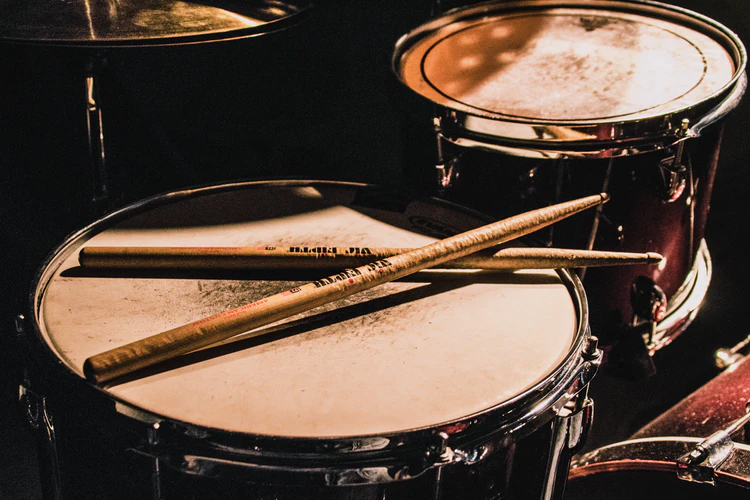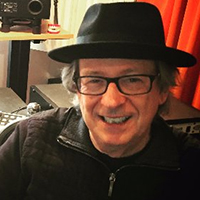Of all acoustic instruments, drums and percussion instruments seem the most elusive to capture with a compelling sound.
The definition of what makes a “good drum sound” has been greatly expanded since the advent of drum machines, samplers and the endless manipulations possible with Pro Tools.
Pop recordings are (mostly) driven by an unique and attractive drum sound. Record producers are looking for the drummer to drive the “feel” of the song and their drum sound to “fill” a certain amount of space within the song’s recording.
Musical tastes and emotion evoke feel while genre and current trends and fashion usually dictate the exact “size” and specific nature of the drum sound. Of course there are always exceptions to any rule.
Size
Size refers to both the actual drum sound itself and the allowed “space” the drums occupy within the recording. Size is equated to all of the following characteristics: realistic (or unrealistic) ambience, a good aural “picture” of the drum stage, good internal drum balance between the individual drums, good low frequencies and high frequencies, punchiness or “weight” in the low mid-range frequencies and dynamic range or how well you can hear the subtle to the loudest hits without distortion.
Perspective
I find that recording drums has very much to do with your monitor mixing as well as the actual sound you are getting on both the individual drums and the total drum kit.
Sure, if I place the drum mix well above the rest of the backing tracks, I can hype the listener into thinking the drum sound is big and muscular. Tilted monitor mixes can make you think you have a great kick drum sound merely because it is very loud.
Pulling the drum mix back into a more realistic mix perspective reveals the true size of the drum recording as it blends with the rest of the instruments and vocals.
When placed in mix perspective, I can assess the relative tonality and balance of the individual drums and judge the overall kit-ambience quality. Low and high frequencies as well as dynamic range are also better judged at this level.
Like a good foundation of a house, if the drum kit sounds good while in relative balance, then any alternative mixing ideas like loud snare and kick drum mixes will work well.
Space
There is exactly 100 percent of available space in any recording. Try as producers and engineers do, you cannot defeat basic physics in the recording studio.
If you’re recording using 16 tracks and want to add another track, you will have to reduce those 16 tracks by the amount of space you want that 17th track to take up.
One of the main attractions of mixing in 5.1 surround is all the additional space you gain with those four extra channels! Mixers feel liberated not having to push the entire mix down a two-track, stereo pipe.
So space is like sonic real estate and a precious resource at that! Working with the producer and drummer will determine how “big” you are going to go with the drum sound to fit into the song and the record.
Recording Philosophy
Being a professional recording engineer, called to take care of critical recordings, I have (over the years) adopted a certain working philosophy of recording.
In a word: it is all about OPTIONS. Unless I’m specifically directed otherwise, I try to record everything so that the next person working on the recording (and often it is not me) is given the most possible options for post-processing.
This means that I get as big and fat a sound as possible without over-compressing or over-equalizing unless of course the producer wants a certain level of grunge, squash and EQ styling.
I also try to get a quiet and distortion-free recording. With any percussion recording, this means carefully knowing and maintaining proper peak recording levels – unless we’re actually looking for intentional clipping.
Strictly speaking, all post-processing will increase both noise and distortion… to a certain degree. Starting with as clean a recording as possible will make future processing sound better.
This philosophy has served me well and offers a good starting place to experiment and take the recording session in any direction the artist/producer/engineer team sees fit.
It’s not that I don’t love all the alternative ways things can sound by way of engineering, it is just my perceived role as recording engineer is best served by NOT trying to “produce” the session by getting a highly personalized tracking sound.
Here are a few insights on miking and recording drums. These are all tried and true “classic” methods that a lot of professional engineers use everyday.
Overheads
The best place to start a drum sound is with the overhead microphones. These mics will tell you just how well the drums actually sound. You’ll hear how they’re tuned and how good a drummer you have and how the room is adding or subtracting to the sound.
If overheads are placed correctly, you’ll hear the kit in the actual balance the drummer achieves. If the drummer is a basher who hits the cymbals as hard as he hits the toms, you’ll hear that. If your drummer has a squeaky bass drum pedal or noisy hi-hat rig, you’ll hear that too.
In short, I always work on the placement (balance), tonality (equalization) and ambience (distance) of the overheads first. I also monitor these microphones in mono when balancing.
You have to remember that the drum kit is one big instrument with many individual components. When all the mics are up and mixed in correct balance, you have a total drum sound composite. It’s a mistake to think of the overheads as just the mics that record the cymbals.
Trying to keep the rest of the kit out of the “cymbal mics” by way of radical filtering or EQ, gating and super-tight miking is ludicrous.




















